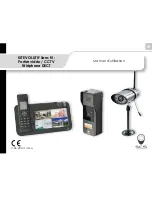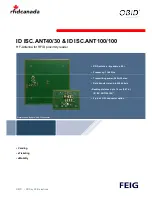
190 Fieldbus Communication
WAGO-I/O-SYSTEM 750 XTR
750-352/040-000 FC ETHERNET G3 XTR
Manual
Version 1.3.0
11.3.5 Object Model
11.3.5.1 General
For network communication, EtherNet/IP utilizes an object model in which all
functions and data of a device are described.
Each node in the network is depicted as a collection of objects.
The object model contains terms that are defined as follows:
Object:
An object is an abstract representation of individual, related components within a
device. It is determined by its data or attributes, its outwardly applied functions or
services, and by its defined behavior.
Class:
A class describes a series of objects which all represent the same type of system
components. A class is the generalization of an object. All objects in a class are
identical as regards form and behavior, but can comprise differing attribute
values.
Instance:
An instance describes a specific and physical occurrence of an object. The terms
“object,” “instance” and “object instance” all refer to a specific instance. Different
instances of a class have the same services, the same behavior and the same
variables (attributes). However, you can have different variable values.
For example, Finland is an instance of the “Land” object class.
Variable:
The variables (attributes) describe an externally visible characteristic or the
function of an object. Typical attributes include configuration or status
information.
For example, the ASCII name of an object or the repetition frequency of a
periodic object is output.
Service:
A service is a function supported by an object and/or an object class. CIP defines
a group of common services that are applied to the attributes. These services
execute specified actions.
Example: Reading variables.
Behavior:
The behavior specifies how an object functions. The functions result from various
occurrences, which are determined by the object, e.g. receiving service requests,
recording internal errors or the sequence of timers.
















































